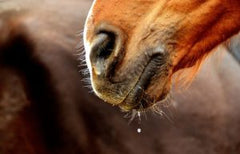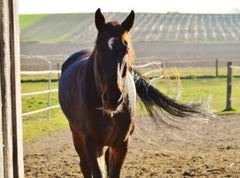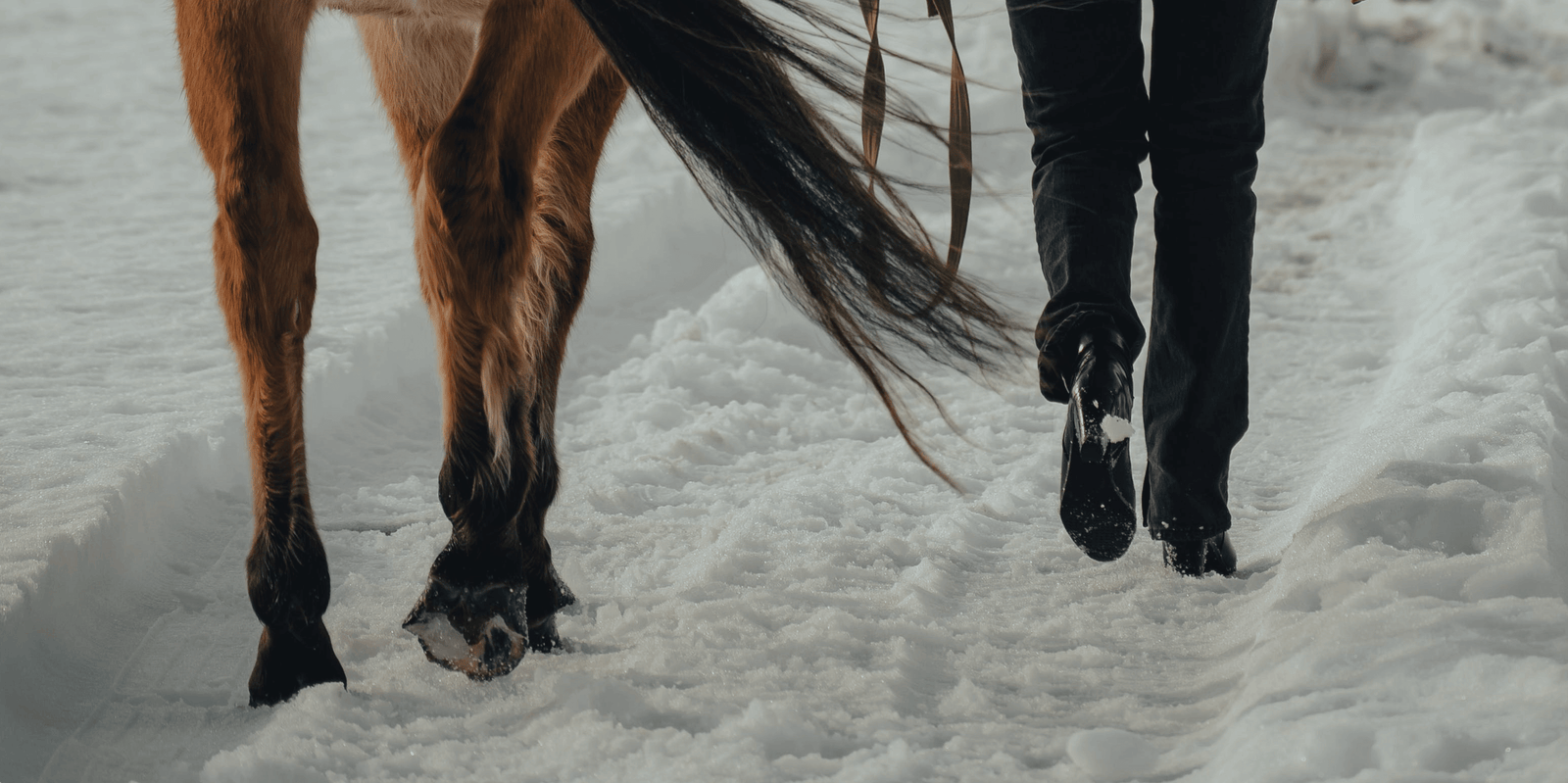Study Associating Pain with Castration (Dalla Costa, et al, 2014)
This original work was done in a study with 40 stallions during castration procedures. You can imagine the pain associated with castration, even with pain medication. If you are interested you should read the article at the following link: http://journals.plos.org/plosone/article?id=10.1371/journal.pone.0092281 It contains lots of pictures of horses in varying degrees of pain and detail how they have quantified the levels of pain.The Horse Grimace Scale is based on six facial actions:

- Stiffly backward ears;
- Orbital tightening;
- Tension above the eyes;
- Prominent tightening of chewing muscles
- Mouth strained
- Strained nostrils
Study Associating Pain with Laminitis (Dalla Costa, et al, 2016)
The second article utilizing the Horse Grimace Scale involved evaluating pain associated with laminitis. Laminitis is a disease that affects horse's feet. Symptoms can range from foot tenderness to the inability to walk, pounding digital pulses, and increased temperature in the hooves themselves. It is directly related to nutrition, so we are especially tuned into the causes, treatment, and prevention of this devastating disease. It can be fatal as was the case with Secretariat, the greatest racehorse that graced the face of the earth. The pain experienced from laminitis is horrific. Now it is possible to characterize the level of pain by using the Horse Grimace Scale (HGS). This scale can be used to evaluate the situation immediately and know the approximate level of the pain your horse is experiencing. It helps you to know when the pain is subsiding or when it is getting worse. If you notice your horse is in pain you will want to evaluate the cause. If the pain is being caused laminitis we can help.We suggest that you do these actions to prevent and/or treat laminitis:

- Plan feeding at regular intervals
- Avoiding large doses of concentrates (grain or rich mixtures of ingredients)
- Feed hay that is low in water-soluble sugars.
- If your horse shows unexplained lameness have your veterinarian evaluate him for insulin resistance and equine metabolic syndrome.
- Feed any of the Horse Guard Products that provide probiotics to stabilize gut function
- Don't allow your horse to become overweight. It is best to feed low sugar forage and grains to maintain healthy weight
- Employ the best farrier that you can find.
The Composite Pain Scale (CPS) uses a number of behavioral and physiologic criteria to evaluate pain including:
- Posture
- Sweating
- Pawing
- Movement
- Head Movement
- Appetite
- Response to stimulus
- Heart Rate
Ultimately, what we are trying to achieve is the most overall comfortable, healthy horse. Considering these scales to help assess pain levels in your horse will help you to determine situations that cause your horse discomfort and prevent them in the future. Providing your horse the best nutrition with joint support can help to prevent painful situations due to arthritis in your horse. Use the Horse Grimace Scale to determine your horse's pain level and use it to start determining if treatment is helping to reduce the pain level.
Citations: Dalla Costa E, Minero M, Lebelt D, Stucke D, Canali E, Leach MC (2014) Development of the Horse Grimace Scale (HGS) as a Pain Assessment Tool in Horses Undergoing Routine Castration. PLoS ONE 9(3): e92281. https://doi.org/10.1371/journal.pone.0092281 Dalla Coast, E., D. Stucke, F. Dai, et al. 2016. Using the horse grimace scale (HGS) to assess pain associated with acute laminitis in horses (Equus caballus). Animals. 6:47.






Leave a comment (all fields required)